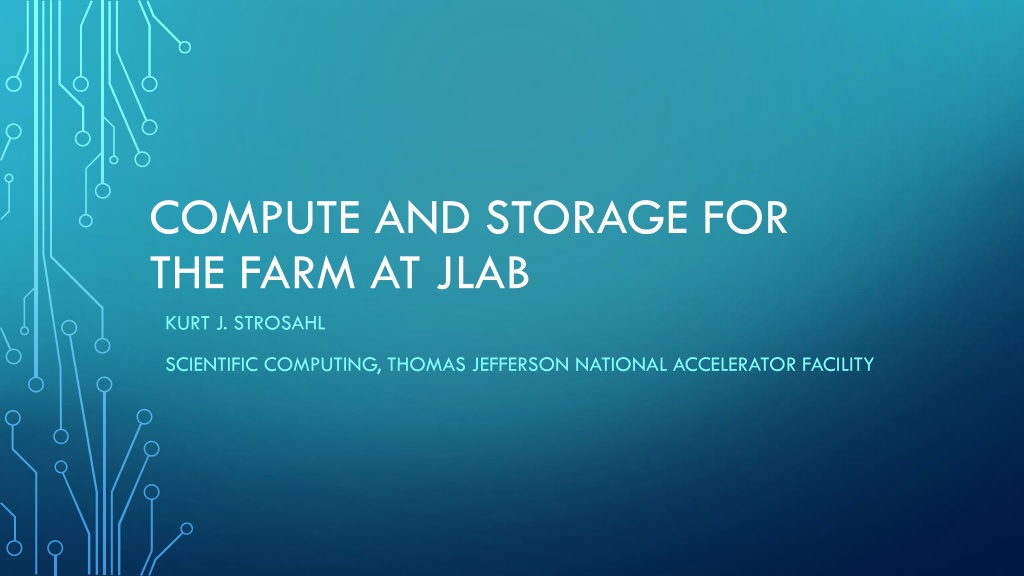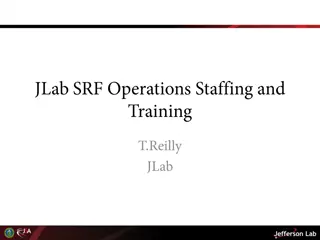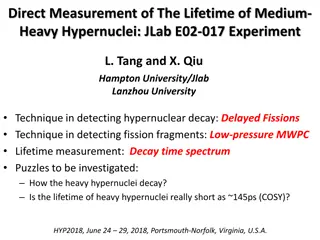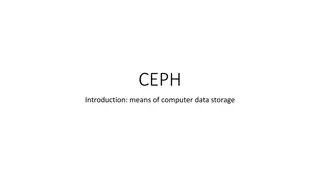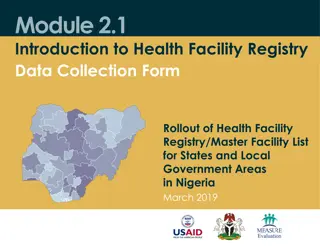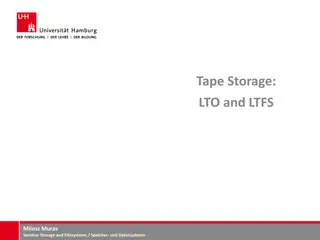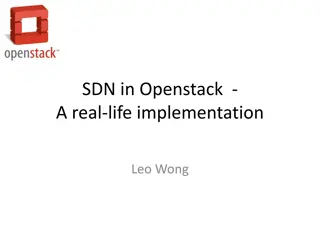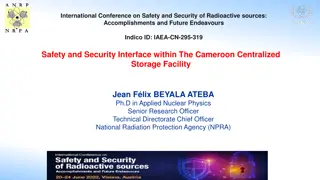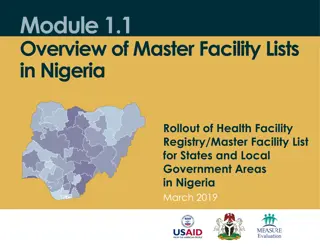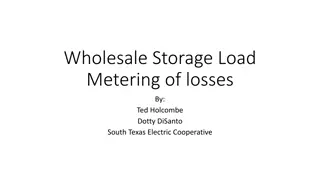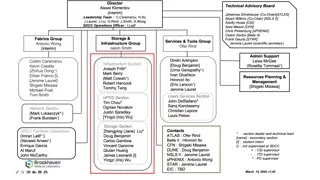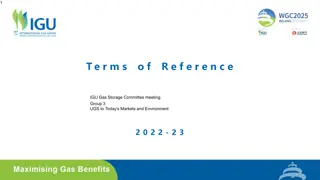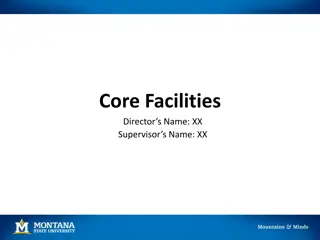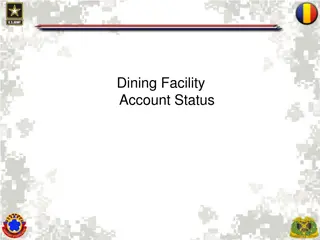Compute and Storage Overview at JLab Facility
Compute nodes at JLab facility run CentOS Linux for data processing and simulations with access to various software libraries. File systems provide spaces like /group for group software, /home for user directories, and Cache for write-through caching. Additionally, there are 450TB of cache space on the Lustre file system and 200TB of separate volatile space. Workspaces exist on both Lustre and independent file servers, with quotas and reservations managed by users. Non-Lustre workspace is used for operations requiring heavy small I/O, databases, and file locking operations.
Download Presentation

Please find below an Image/Link to download the presentation.
The content on the website is provided AS IS for your information and personal use only. It may not be sold, licensed, or shared on other websites without obtaining consent from the author. Download presentation by click this link. If you encounter any issues during the download, it is possible that the publisher has removed the file from their server.
E N D
Presentation Transcript
COMPUTE AND STORAGE FOR THE FARM AT JLAB KURT J. STROSAHL SCIENTIFIC COMPUTING, THOMAS JEFFERSON NATIONAL ACCELERATOR FACILITY
OVERVIEW Compute nodes to process data and run simulations Single and multi-thread capable Linux (CentOS) On disk space and tape storage Disk space for immediate access Tape space for long term storage Interactive nodes Code testing Review of data Infiniband network Provides high speed data transfer between nodes and disk space
COMPUTE NODES Run CentOS Linux (based off of Red Hat) CentOS 7.2 primarily (10,224 total job slots) CentOS 6.5 being phased out (544 total job slots) Many software libraries available Python Java Gcc fortran Span several generations of hardware Newer systems have more memory, larger local disks, faster processors
FILE SYSTEMS CNI provided /group - a space for groups to put software and some files, backup up by CNI /home - your home directory, backed up by CNI Cache - write through cache Volatile - acts as a scratch space Work unmanaged outside of quotas / reservations
/CACHE A write-through cache (files get written to tape) 450 TB of total space Resides on the Lustre file system Usage is managed by software Quota: Limit that can be reached when luster usage on a whole is low Reservation: Space that will always be available Groups are allowed to exceed these limits if other groups are under their limits.
/VOLATILE 200TB of space total Uses a separate set of quotas and reservations Files are not automatically moved to tape Files are deleted if they have not been accessed in six months When a project reaches its quota files are deleted based on a combination of age and use (oldest, least used first). If lustre use is critical files are deleted using the same
/WORK Exists on both the lustre file system and independent file servers (zfs) Has quotas and reservations Is otherwise managed by users Non-lustre work space is for operations that are heavy in small i/o (code compilation), databases, and operations that require file locking. Is not backed up automatically Can be backed up manually using the jasmine commands
LUSTRE FILE SYSTEM A clustered, parallel, file system Clustered: Many file servers are grouped together to provide one "namespace" Parallel: Each file server performs its own reads and writes to clients A metadata system keeps track of file locations, coordinates Luster has a quota system, but it applies to the whole lustre file system and not subdirectories. You can check this quota using: lfs quota g <group name> This quota is a sum of all quotas (volatile, cache, work) and serves as a final break against a project overrunning lustre Best performance comes from large reads and writes Uses ZFS to provide data integrity Copy on Write (COW) Data is checksummed as it is written, and that checksum is then stored for later verification
TAPE STORAGE IBM tape library, with LTO4 to LTO6 tapes Long term storage Is accessed by bringing files from tape to disk storage Jasmine commands request specific files to be sent or retrieved from tape Can be accessed through auger and SWIF submission scripts Maximum file size is 20GB
AUGER, OR HOW YOU USE THE BATCH FARM Auger provides an intelligent system to coordinate data and jobs. Takes either plain text or xml input files describe what files are needed for a job What resources a job is going to need Memory, number of processors (threads), on-node disk space, time needed What to do with output files Full details of the auger files, and the options available can be found at https://scicomp.jlab.org/docs/auger_command_files
LINKS https://scicomp.jlab.org/ System status Where your jobs are Status of tape requests Important news items https://scicomp.jlab.org/docs/FarmUsersGuide Documentation of commands available
